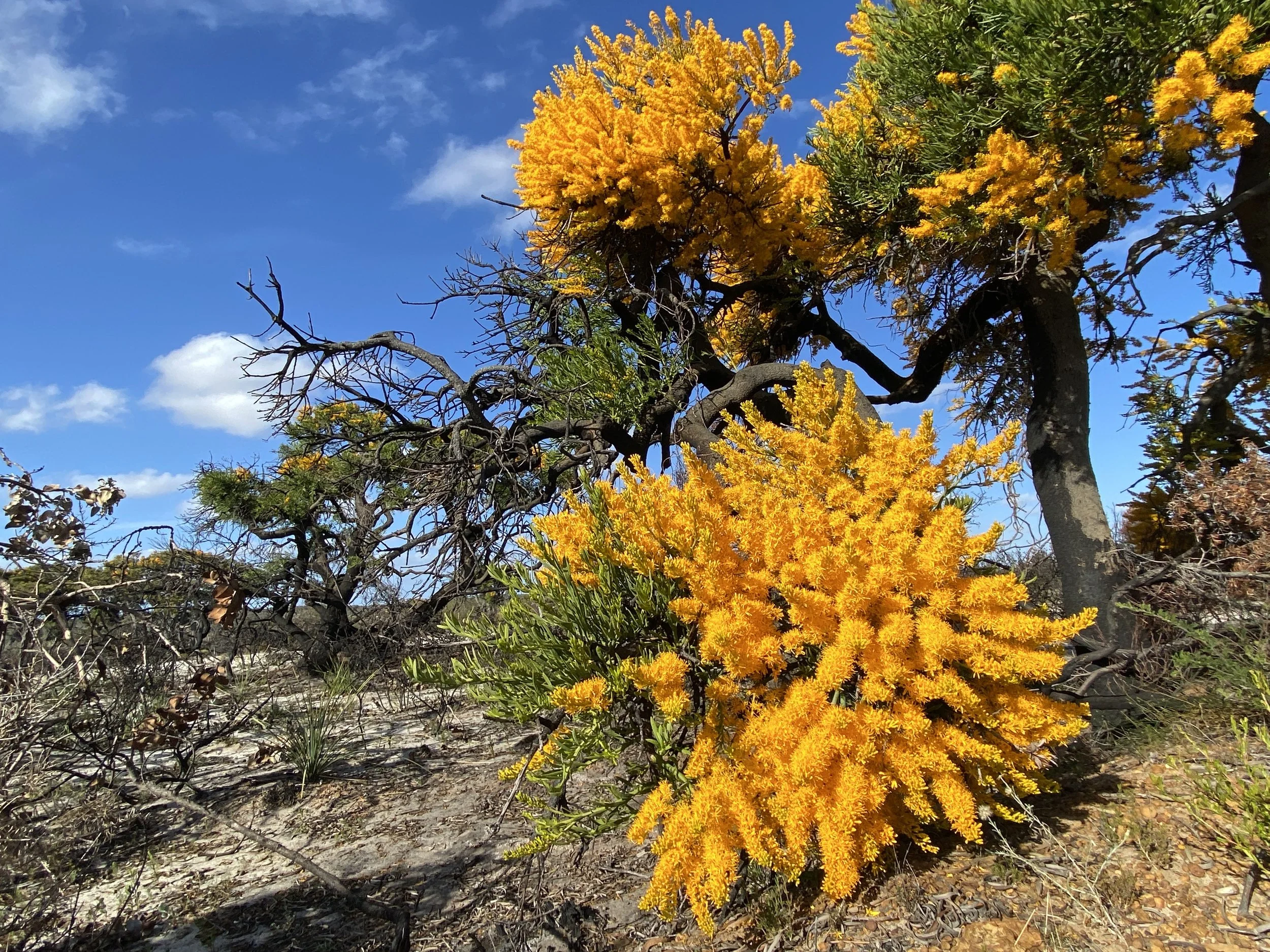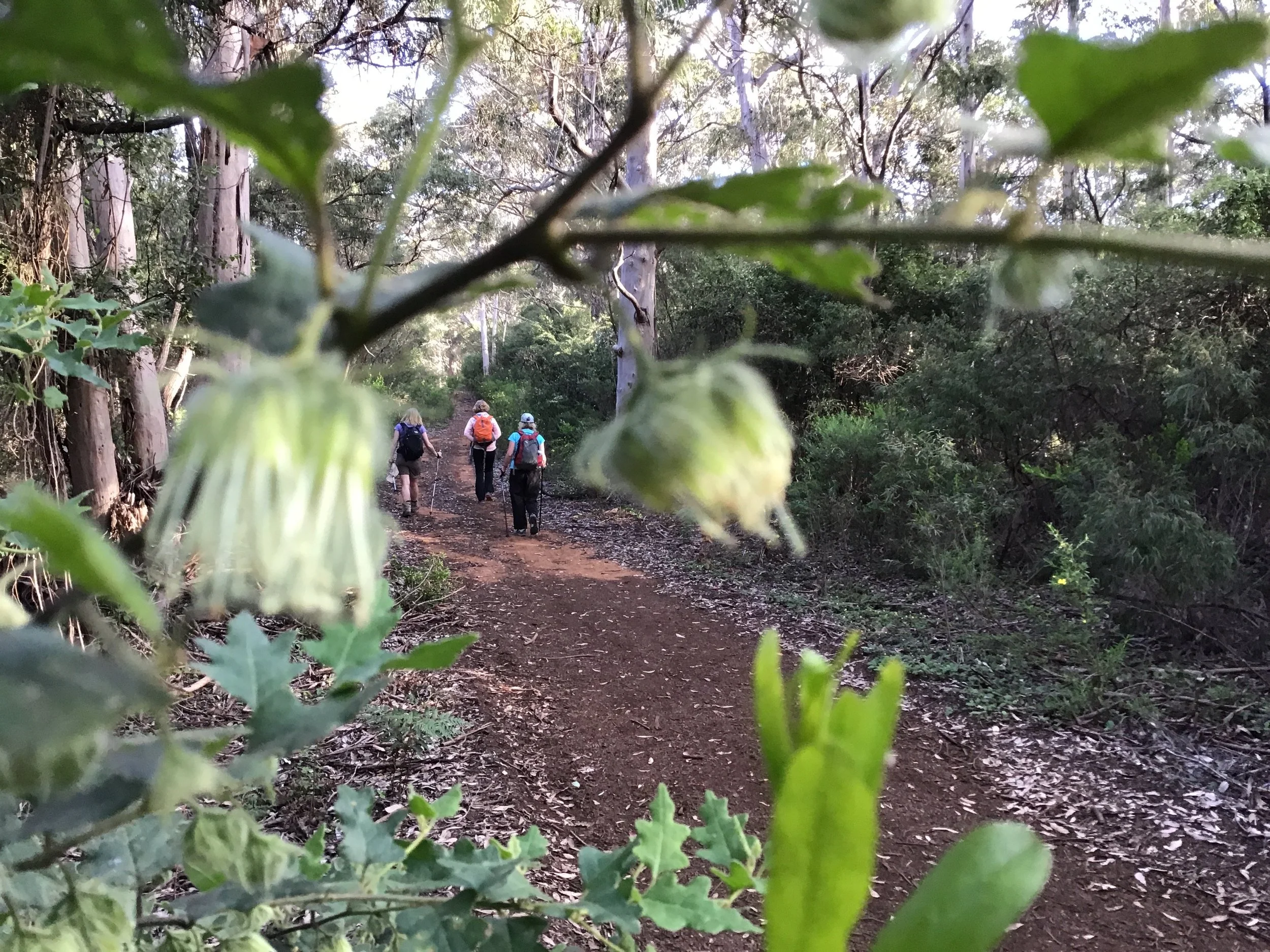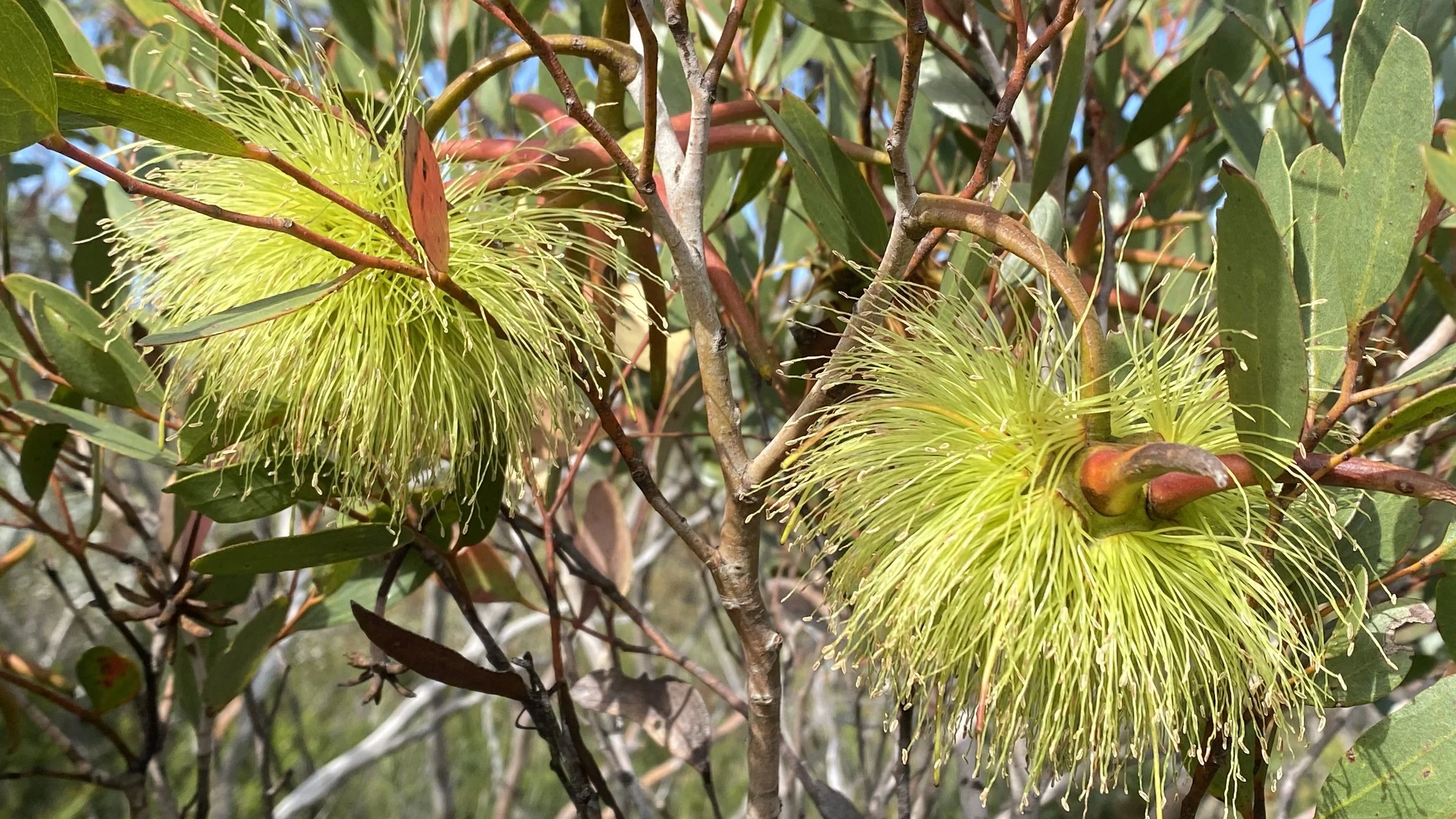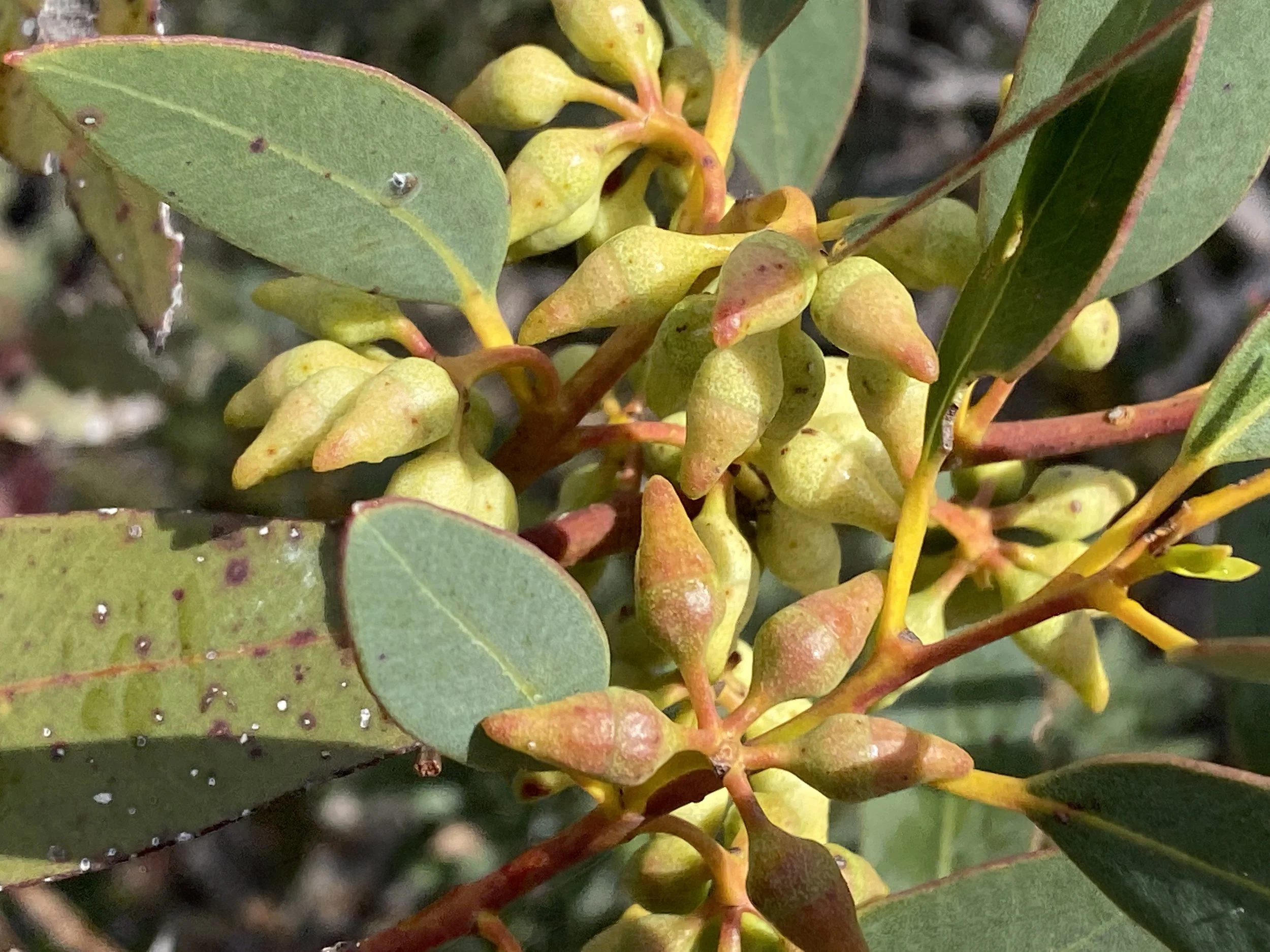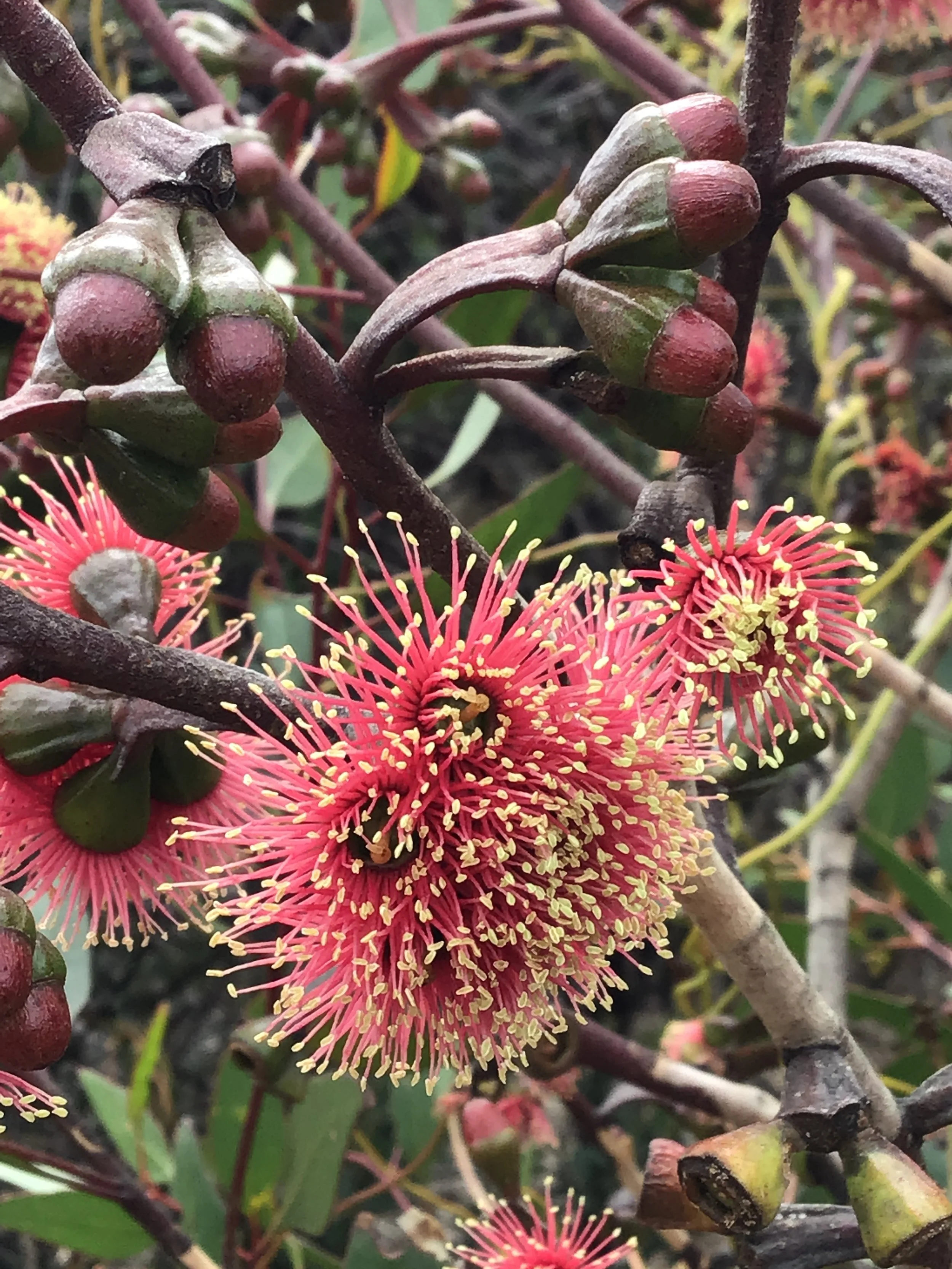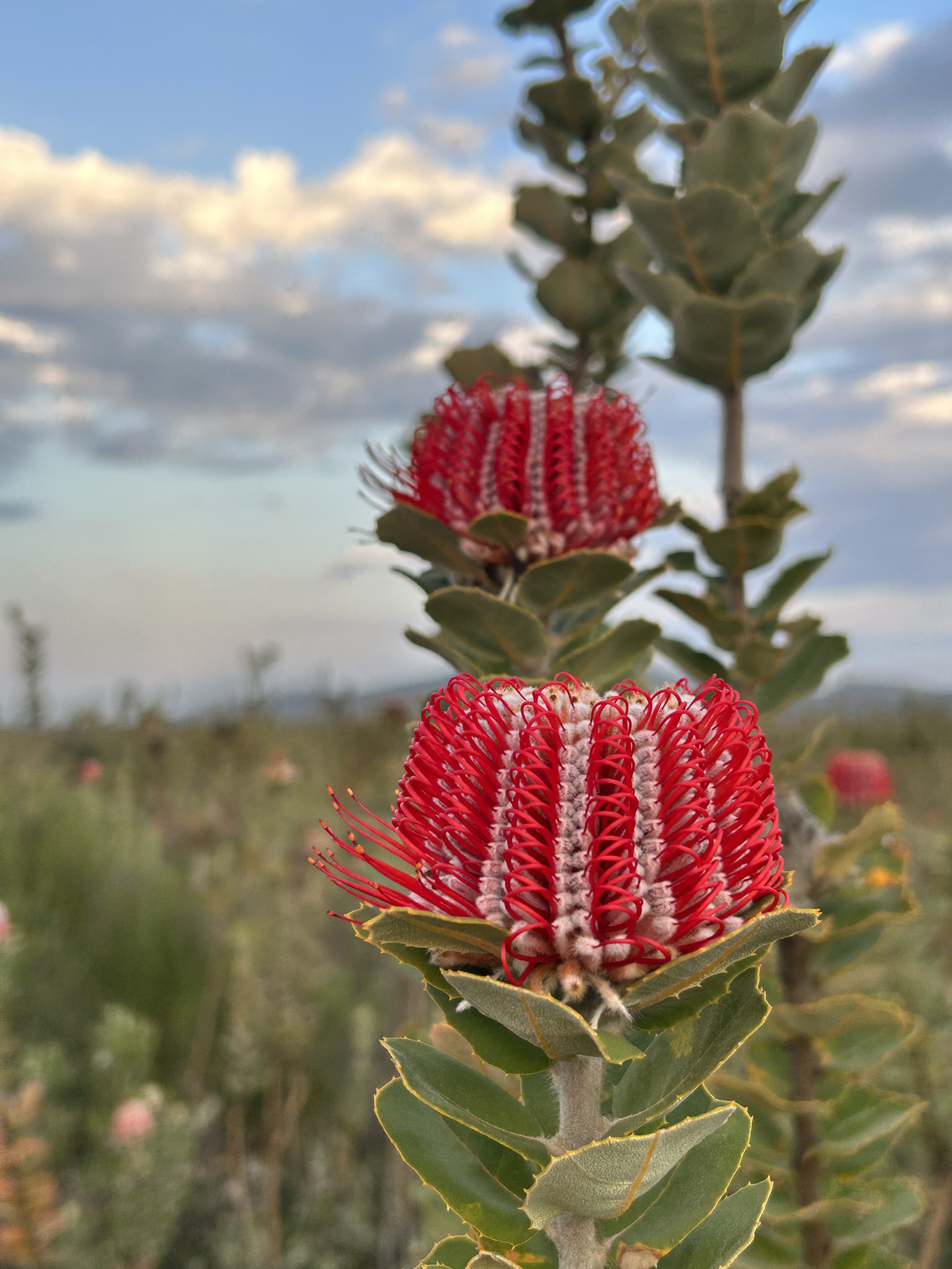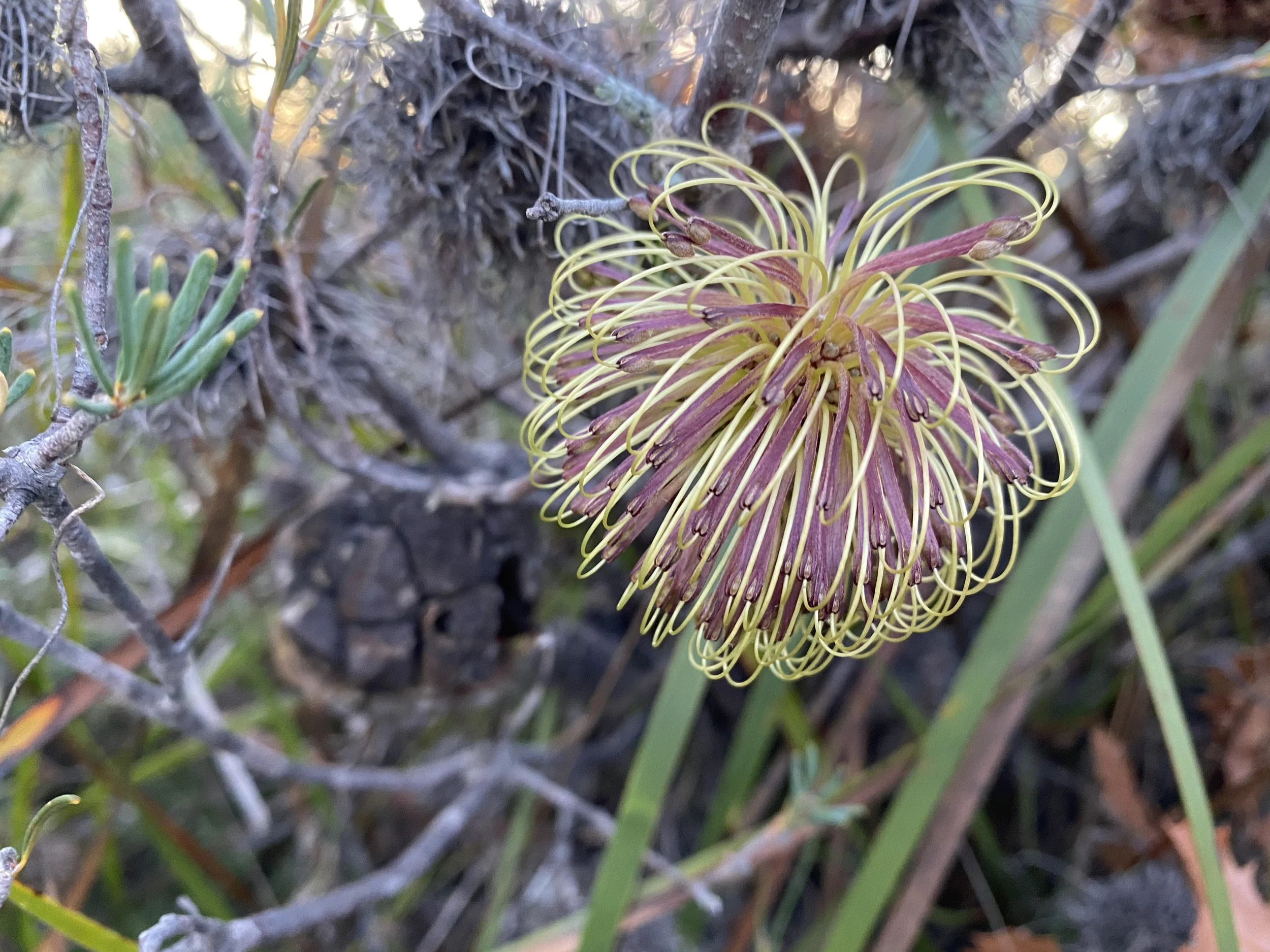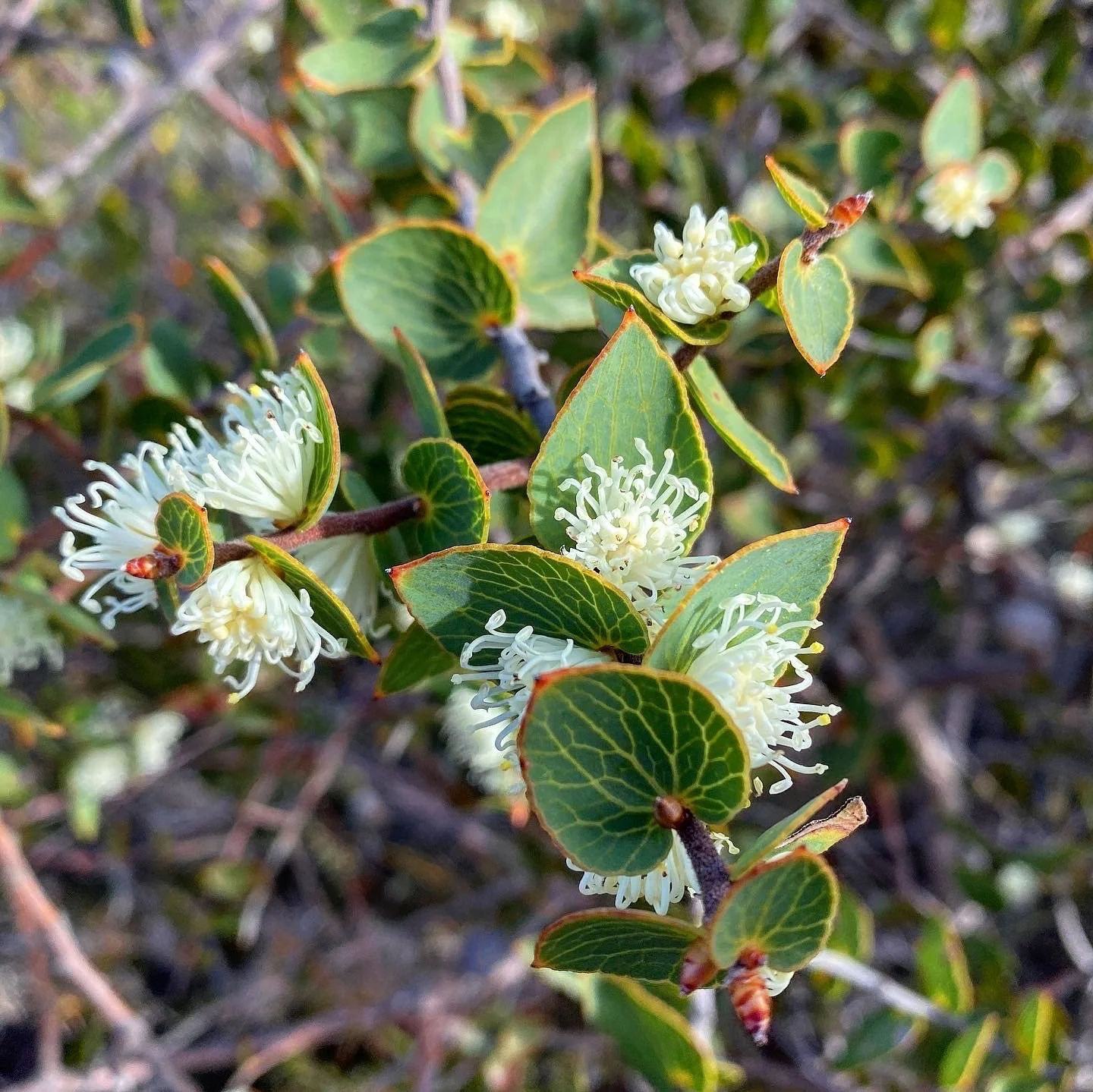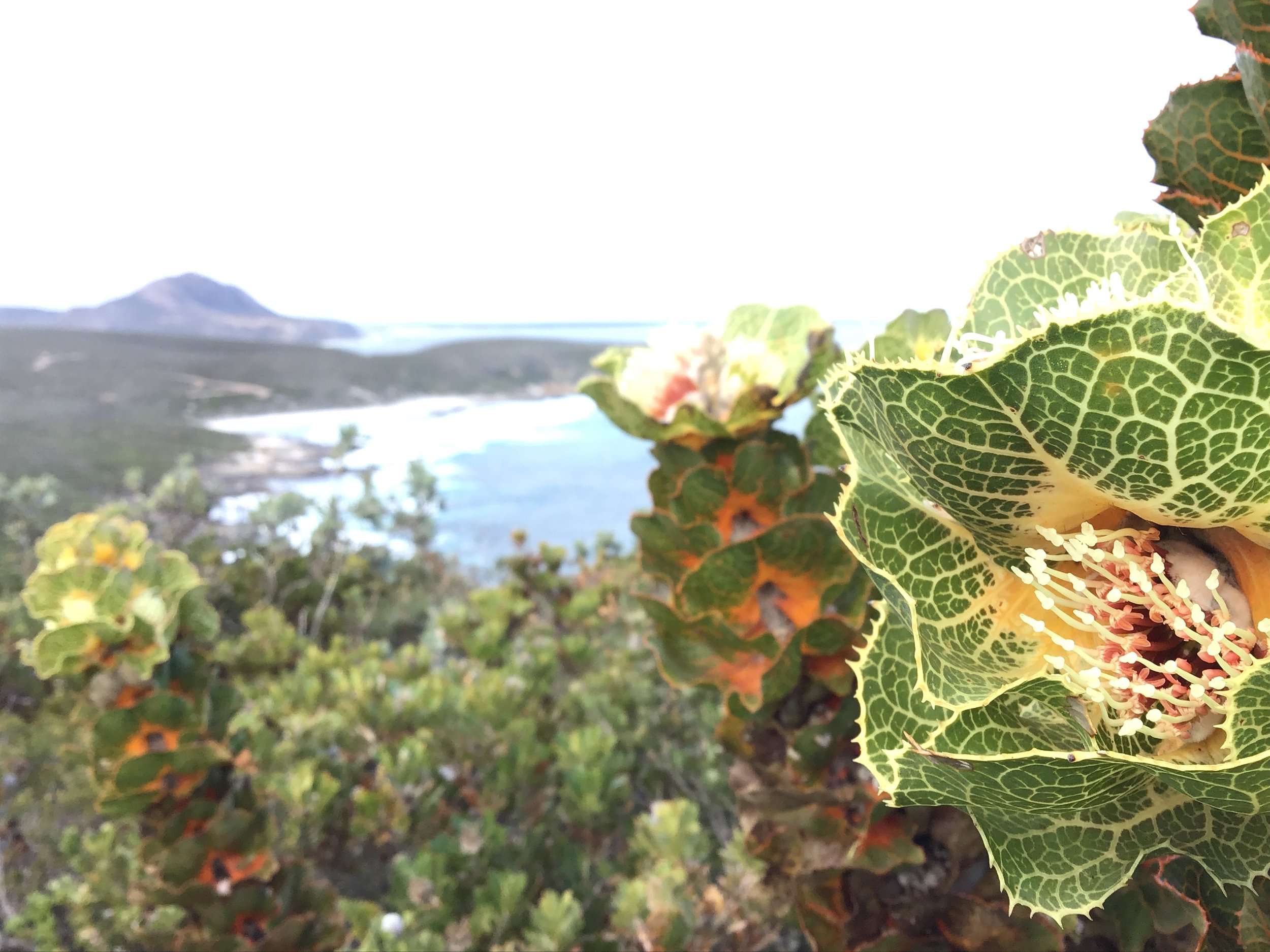The southwest of Western Australia has been called ‘one biodiversity hotspot to rule them all…’.
It is home to over 8,000 plant species, most of them endemic.
It is by far the most biodiverse region in Australia and one of the most diverse in the world. (see figure below).
Evolving over millions of years these species have adapted to survive the extreme and hostile conditions and constraints to survival.
Along with increasingly frequent and devastating fires, plants in the southwest also face extreme heat and drought; soils with next to no nutrients, an abundance of plant-eating animals, and a lack of pollinators.
None is more spectacular, and relevant for this time of the year than the Nuytsia floribunda, aka WA Christmas Tree.
WA Christmas Tree - Hopetoun, January 2021 flowering after fire.
Most people in Western Australia know that the appearance of the dazzling orange blooms points to the start of the warm weather and with that, fire season.
Fire is one of the main constraints to survival facing all southwest species.
Moodjar, as this parasitic mistletoe tree is known in Noongar language, is so distinct there is only one species.
Dating back 45 million years it has developed some unique traits to survive fire and other constraints.
Here are some:
2. Uses fire to sprout new growth from buds held deep inside branches and roots.
2. Some of these underground shoots can spread 100 metres around the parent tree and develop small, shallow roots that eventually develop the mechanisms (known as haustoria) that help it dig its way into the host roots
3. The Nuytsia haustoria are the ring-shaped structures that surround the roots of the host plant and cut into it, to suck water or other nutrients.
4. Its fruits are dispersed by the wind using the papery and three-winged shape. The papery surface of the fruit helps it absorb water and germinate the seed.
5. Seedlings can survive 3 to 4 years without a host if the soil has enough nutrients.
Three-winged fruit dispersed by wind can be scattered up to 50 metres away from tree.
Nuytsia floribunda haustoriogens - these ring shaped mechanisms surround the host root and cut into it to access nutrients and water.
In addition to having some unique features to survive fire and other constraints, the Moodjar is also of great spiritual importance to Noongar people, especially the Wardandi and Bibbulun people of southwest WA.
The dazzling flowers of the tree are believed to represent the spirits of people who have passed and are on their way to Kurannup or the home of the dead.
For many Noongar people it is disrespectful to stand in its shade or to collect its roots or sap.
‘No living Bibbulmun ever sheltered or rested beneath the shade of the tree of souls; no flower or bud or leaf of the tree was ever touched by child or adult; no game that took shelter beneath it was ever disturbed.’ (Bates 1938 in Bridge 1992: 153)
It is also believed that a cluster of Nuytsia has been used as a ceremonial space for women to conduct ‘women’s business’.
Like many of the diverse plant life of Western Australia, this spectacular tree represents the heating up of the weather, traditional culture and displays extraordinary features that enable its survival in our unique and demanding conditions.
Brundrett, Mark C., 2021, One biodiversity hotspot to rule them all: southwestern Australia – an extraordinary evolutionary centre for plant functional and taxonomic diversity, Journal of the Royal Society of Western Australia, 104, 91 - 122.
Groom, Philip K. & Lamont, Byron B2015, Plant life of Southwestern Australia, adaptations for survival. De Gruyter Open, Berlin.
https://www.broadsheet.com.au/national/food-and-drink/article/just-because-its-there-doesnt-mean-you-have-right-use-it-why-moodjar-sacred-tree-nyoongar-people-and-should-never-have-been-used-make-gin

